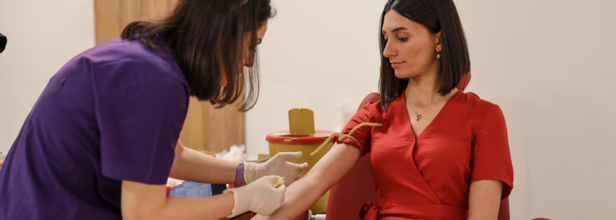
Credits: canva
Women Are Three Times More Likely Than Men To Develop Anemia
Women's day is around the corner and is a reminder for all to pay attention on women's contribution, their issues and their health. In medicine itself, for the longest women and their health have been ignored or underrepresented, however, studies are not ensuring to fill in that gap. One such study by Redcliffe Labs, which is a leading diagnostic healthcare service provider has identified a significant rise in lifestyle disorder among women.
The study was conducted for two years to analyze health data from over 1 million women. The study revealed that anemia and thyroid disorders are among the most prevalent health concerns among women. At least 1 in 5 women is at risk of thyroid disorder, which can lead to fatigue, metabolic issues, and hormonal imbalances. The study also highlighted an alarming increase in anemia, along with arthritis, diabetes and lipid imbalances in women.
What Is Anemia?
Anemia is a blood disorder that happens when your body does not have enough healthy red blood cells, or the red blood cells are not functioning well. You may feel weak, tired, and also experience shortness of breathe. As per the National Heart, Lung, and Blood Institute (NHLBI), one of the main causes of iron deficiency anemia is blood loss. It is also true that you effective lose your blood when you donate. This is because hemoglobin levels dip, since it is a protein in your red blood cells that carries oxygen from your lungs to your organs and tissues.
This is what happens in anemia, when the hemoglobin levels dip from your red blood cells, leaving it unable to complete its functions properly.
Why Is It More Common In Women?
As per the American Society of Hematology, anemia affects more than 3 million Americans, causing nearly 900,000 trips to Emergency Room each year. In women it is more common due to heavy menstrual period. As it puts them at a greater risk of developing anemia because they deplete the body of essential red blood cells. Women are also at a higher risk during pregnancy, at a time when the body requires more iron than normal to support their and their baby's need. In fact, blood loss during childbirth, especially in cases of postpartum haemorrhage can also lead to anemia.
As per the World Health Organization or WHO, globally, it is estimated that 40% of all children aged 6 to 59 months, 37% of pregnant women and 30% of women 15 to 49 of age are affected by anemia.
What Are The Signs And Symptoms of Anemia?
The common symptoms are:
- tiredness
- dizziness or feeling light-headed
- cold hands and feet
- headache
- shortness of breath, especially upon exertion.
The WHO also notes severe anemia, that can cause more serious symptoms including:
- pale mucous membranes (in the mouth, nose etc.)
- pale skin and under the fingernails
- rapid breathing and heart rate
- dizziness when standing up
- bruising more easily
What About Blood Donation, If You Have Anemia?
As per the National Institutes of Health, you must have a minimum level of hemoglobin before you can donate. For males, it is 13.0 g/dL, and females, it is 12.5 g/dL. In case your hemoglobin levels are lower than mentioned, you will be diagnosed as anemic and will not be allowed to donate blood.
In case you do not meet the minimum requirements, you will be required to wait 30 days before being allowed to donate blood.
© 2024 Bennett, Coleman & Company Limited

